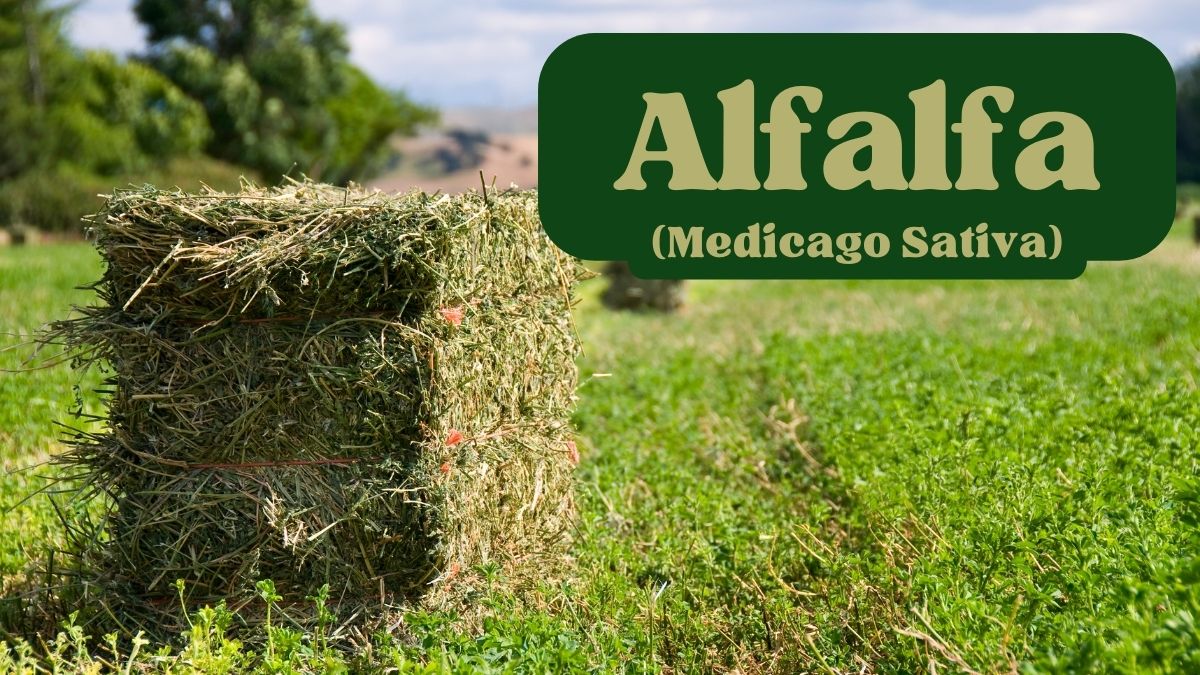Medicago sativa, most often known as alfalfa, is an exceptionally valuable crop. This nutrient-rich legume, known as the “Queen of Forages,” has been cultivated for generations. In this in-depth study, we will explore the world of alfalfa even further, delving into its intriguing history, careful cultivation, outstanding nutritional content, many applications, and crucial ecological relevance. So, let’s delve deeper and learn more about this incredible plant, often known as the “green gold” of farming.
A Brief History of Alfalfa
The Ancient Origins
The history of alfalfa may be traced back to ancient Persia, when it was first farmed for its feed value. The Persian name for the plant, “Aspshta,” comes from the belief that it improves a horse’s performance. Once grown only in Persia, the plant has since become a staple crop across Asia, Europe, and the Americas.
The Name Game
Indeed, even the origin of the word “alfalfa” is fascinating. The name comes from the Arabic phrase “al-fasfasa,” which translates to “fresh fodder.” This was eventually anglicized into the Spanish word “alfalfa.” Intriguingly, alfalfa has been known by many different names throughout time and across cultures and geographic locations.
Cultivation and Growth
Ideal Growing Conditions
In order to grow the plant well, a number of conditions must be met. It grows best in neutrally acidic, well-drained loam. It is susceptible to waterlogging, thus it does best in temperate areas with average rainfall. Proper watering and drainage are vital to its growth.
Lifecycles and Varieties
The average lifespan of an alfalfa plant is between three and five years. In order to maximize crop yields, farmers and agronomists must have a thorough understanding of these lifecycles. Numerous varieties, each with its own set of distinguishing traits, make it possible for the plant to flourish in a wide range of environments and agricultural contexts.
Nutritional Value
Alfalfa as Livestock Feed
It is commonly used for animal feed. Because of its high nutrient content, it is an excellent feed crop. The plant is a rich source of protein, vital vitamins (such as A, C, and E), and minerals (including calcium and potassium). Animals with digestive systems similar to ruminants (cows, sheep, and goats) benefit from its high fiber content.
Health Benefits for Livestock
It provides several health benefits to animals beyond only its excellent nutritional content. Evidence suggests that it helps animals digest food better, boosts milk production in dairy cows, and contributes to their health generally.
Human Consumption
Nutrient-Rich Sprouts
The nutritional value of it extends to human ingestion. Alfalfa sprouts, typically used in salads, sandwiches, and wraps, are a popular health food. Antioxidants, minerals (including iron and magnesium), vitamins (such C and K), and more may all be found in abundance in these sprouts. Paradise crunch has a nutty taste and a light texture.
Traditional Medicinal Uses
Traditional medicine has long recognized the health benefits of alfalfa. It has been used to ease stomach pain, strengthen the immune system, and improve general health. Because of its high nutritional density, it is frequently used in natural medicines.
Environmental Impact
Nitrogen Fixation
It’s capacity to fix atmospheric nitrogen is one of its environmental benefits. By partnering with nitrogen-fixing bacteria, alfalfa is able to transform nitrogen in the air into a form that other plants can use. In addition to helping future crops thrive, this method also reduces the demand for synthetic fertilizers by increasing soil fertility.
Erosion Control
The deep, wide roots of alfalfa are crucial in halting soil loss. Its fibrous, deep roots link soil particles together, protecting them from wind and water. In order to preserve soil health and avoid land deterioration, an erosion control function is needed.
Agricultural Challenges
Pests and Diseases
Although alfalfa is a hardy crop, it nonetheless faces difficulties. Aphids and leaf spot are only two of the common pests and diseases that may destroy an alfalfa crop. Farmers respond to these difficulties through the adoption of integrated pest control measures including the introduction of beneficial insects and the planting of disease-resistant cultivars.
Harvesting and Storage
Maintaining it’s nutritional value as animal feed requires careful harvesting and storage. If farmers want their crops to retain as many nutrients as possible, they need to harvest at just the right moment and keep them in the right conditions throughout storage.
Conclusion
Due to its long history, great nutritional content, and environmental advantages, it remains an essential crop. It’s a crucial crop for sustainable farming and has several uses as animal feed and human nourishment. As we wrap off our investigation of alfalfa, it’s important to recognize the lasting impact this plant has had on agriculture and beyond.
FAQs
1. What is the history of alfalfa cultivation?
For millennia, Persians have planted it for its feed value, and the plant has deep historical roots there.
2. What are the ideal conditions for growing alfalfa?
The plant grows best in neutrally acidic, well-drained loam. It is susceptible to waterlogging, thus it does best in temperate areas with average rainfall.
3. How does alfalfa benefit livestock?
It is a very nutritious feed crop that has been shown to increase milk output in dairy cows by facilitating better digestion.
4. Are there health benefits to consuming alfalfa sprouts?
Sprouts of this plant do contain many beneficial nutrients and might be eaten by humans.
5. How does alfalfa contribute to nitrogen fixation it?
In addition to being a high-quality feed crop for animals, alfalfa is also a significant nitrogen fixer, with much of this nitrogen being stored in the plant’s crown and roots.









